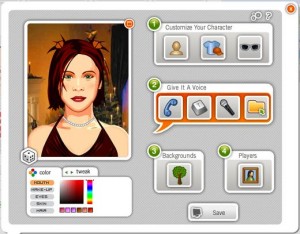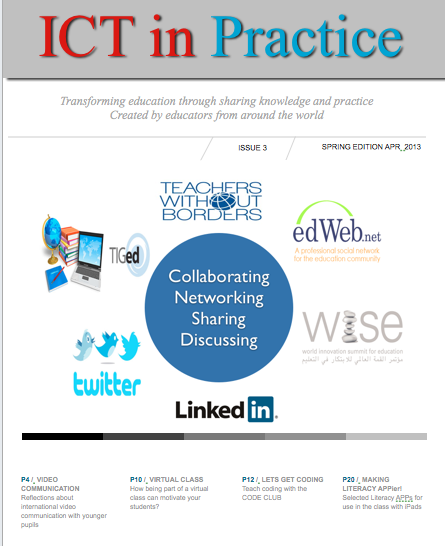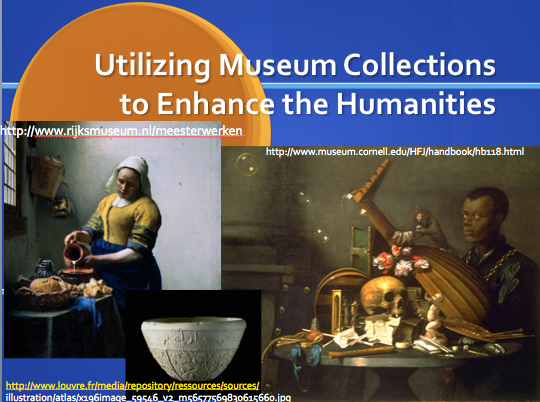You are only limited by your creativity
I introduced some web 2.0 tools in education for our commenius project meeting in Estonia (March 24-29, 2014). The project was called ‘Citizen of Care-land’, 2013-2015. Teachers from 12 European coutries attended the conference, amongst them my school, Pujanke Elementary School. I decided to make a presentation and show it to the teachers in order to bring them closer to some of the web 2.0 tools. My main aim was that teachers returned back to their schools and disseminated their findings about web 2.0 to their pupils, as our project’s aim is to use ICT amongst teachers and pupils. We have our Twinspace (private area of our project) on the E-twinning platform, where we share all project activities. Teachers and pupils have their separate areas to communicate with each other, upload and share photos, videos etc. Our project is focused on pupils activities; pupils make presentations showing a certain activity and then present them at each project conference. I therefore first decided to show them how they could improve their presentations by using Prezi tools for creating presentations instead of the more traditional Power Point.
My presentation for that purpose was created in Prezi, and it was interesting that teachers could learn how to navigate with Prezi whilst they were watching at the presentation at the same time. All of the teachers were in front of the computers, listening to me and following the steps. First, I explained what Prezi is; that it is a new way of creating, collaborating, editing and sharing user-generated content online. Prezi allows you to design your own distinctive, eye-catcing presentations.
I also showed them that these presentations can be flowing; that they can arrange text and images in any way they like, they can also choose the order and amount in which each element will be zoomed into. I then explained the process for creating an account on Prezi.com (I suggested setting up a free account for the first time). Finally, I showed them how to create a presentation after creating an account simply by clicking on ‘New prezi‘ and using basic tools on a blank canvas (A place where you create your presentation). The teachers were fascinated with the fact that they become like artists in Prezi, where they decide about the appearance of their presentation. I showed them ‘a wheel’ that gives them easy access to all of the main tools where they simply clicked and dragged what they wanted. If they wanted to write something, they could just double-click anywhere to begin typing. It was very interesting when they realised that they could insert files (pdf, power point, video, photos..) into their Prezi. I also introduced them to very important tools in Prezi, to paths that allow them to create the order of their presentation after they have put all the text, videos, photos etc. Using paths, they began clicking on the element they wanted to zoom into first and they continue clicking on each object in the order that they wanted them to appear in their presentation. I highlighted that they can always edit everything. Finally, I showed them that they can edit, delete or download Prezi, and what is more important, share Prezi using ’embed code’ or copying the link. We shared our Prezis on the educational platfrom E-twinning, on Twinspace. In May, during our Project conference in Spain, pupils had the task to create presentions about ‘Women rights in Europe’, and the great surprise: – many presentations were created in Prezi. It was great!
The second tool that I wanted to introduce to them was Voki, a speaking avatar  that is a great tool for classroom activities and makes learning fun. I wanted teachers to incourage their pupils to communicate with pupils from different countries using Voki. Voki can easily be embedded on our Twinspace, so we decided to create virtual presentations with Voki tools. Voki is a very simple tool, on www.voki.com you create your username and login. When you enter, you decide upon the appearance of your Voki character (you can choose a character that is similar to you or not), and when you click ‘Customize your character’ you can change the colour of its eyes, clothes, even the colour of the skin etc. The most important is to give your Voki a voice, and you can select from a few options how to do it (recording with a microphone, uploading an audio file or the easiest option – you just type in your text). After you have typed the text, you can even choose the language and the voice and accent of your avatar. Sharing Prezi is also great (you can email your Voki, copy the link or embed the code).
that is a great tool for classroom activities and makes learning fun. I wanted teachers to incourage their pupils to communicate with pupils from different countries using Voki. Voki can easily be embedded on our Twinspace, so we decided to create virtual presentations with Voki tools. Voki is a very simple tool, on www.voki.com you create your username and login. When you enter, you decide upon the appearance of your Voki character (you can choose a character that is similar to you or not), and when you click ‘Customize your character’ you can change the colour of its eyes, clothes, even the colour of the skin etc. The most important is to give your Voki a voice, and you can select from a few options how to do it (recording with a microphone, uploading an audio file or the easiest option – you just type in your text). After you have typed the text, you can even choose the language and the voice and accent of your avatar. Sharing Prezi is also great (you can email your Voki, copy the link or embed the code).
Our pupils use Voki to communicate with each other about ceartain topics, they like it very much as they find Voki interesting and funny. Our teachers have made their own Vokis too and shared them on E-twinning to present themselves to other teachers. My final tool was Glogster – online interactive posters that allows you to combine text, pictures, graphics, video and audio into an interactive poster. I wanted to introduce this tool to teachers in the project, because in our project we have pupils visits other countries, not just the teachers.
 Pupils from one country host pupils from another country in their home. I found this tool great for introducing each other, making a poster of him/her, and he/she can write, draw, add videos and everything else that chracterises him or her. In this way, our pupils learned about each other, and made closer connections before their visit. They enhanced many skills using this tools-creativity, effective communication, student collaboration, literacy skills etc. It can be done in a short time, so our pupils used this tool .You simply register at Glogster edu, write some info about yourself and start playing by clicking and dragging text, image, graphics, video, sound etc, and share your Glogster on website or somewhere else. Our pupils shared their Glogsters on the Pupils’ area on Twinspace, and through email.
Pupils from one country host pupils from another country in their home. I found this tool great for introducing each other, making a poster of him/her, and he/she can write, draw, add videos and everything else that chracterises him or her. In this way, our pupils learned about each other, and made closer connections before their visit. They enhanced many skills using this tools-creativity, effective communication, student collaboration, literacy skills etc. It can be done in a short time, so our pupils used this tool .You simply register at Glogster edu, write some info about yourself and start playing by clicking and dragging text, image, graphics, video, sound etc, and share your Glogster on website or somewhere else. Our pupils shared their Glogsters on the Pupils’ area on Twinspace, and through email.
I encourage my colleagues all the time within my school, within the project and my pupils to use ICT as it is fun, creative, and pupils learn faster through games without realising that they are actually learning at the same time.















